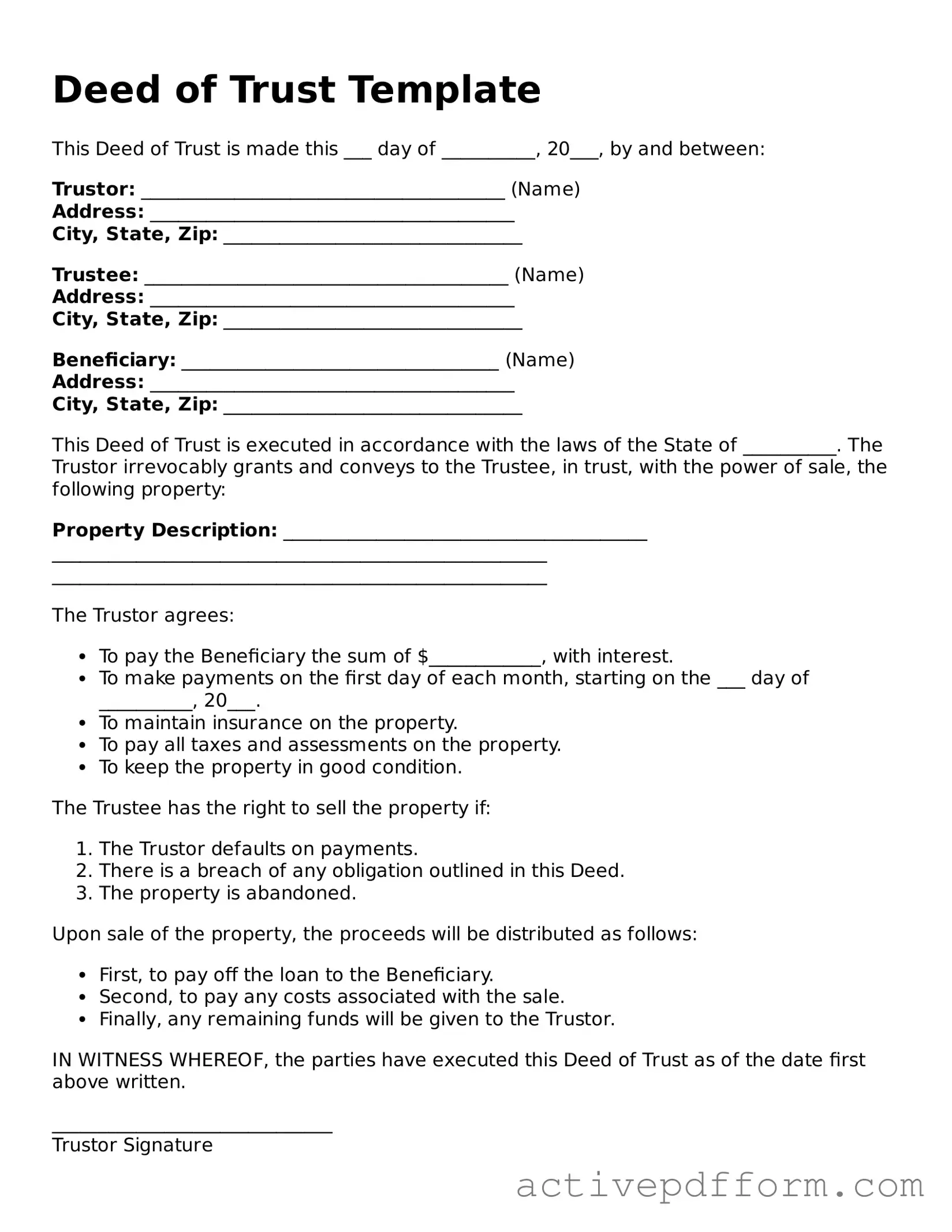Deed of Trust Template
This Deed of Trust is made this ___ day of __________, 20___, by and between:
Trustor: _______________________________________ (Name)
Address: _______________________________________
City, State, Zip: ________________________________
Trustee: _______________________________________ (Name)
Address: _______________________________________
City, State, Zip: ________________________________
Beneficiary: __________________________________ (Name)
Address: _______________________________________
City, State, Zip: ________________________________
This Deed of Trust is executed in accordance with the laws of the State of __________. The Trustor irrevocably grants and conveys to the Trustee, in trust, with the power of sale, the following property:
Property Description: _______________________________________
_____________________________________________________
_____________________________________________________
The Trustor agrees:
- To pay the Beneficiary the sum of $____________, with interest.
- To make payments on the first day of each month, starting on the ___ day of __________, 20___.
- To maintain insurance on the property.
- To pay all taxes and assessments on the property.
- To keep the property in good condition.
The Trustee has the right to sell the property if:
- The Trustor defaults on payments.
- There is a breach of any obligation outlined in this Deed.
- The property is abandoned.
Upon sale of the property, the proceeds will be distributed as follows:
- First, to pay off the loan to the Beneficiary.
- Second, to pay any costs associated with the sale.
- Finally, any remaining funds will be given to the Trustor.
IN WITNESS WHEREOF, the parties have executed this Deed of Trust as of the date first above written.
______________________________
Trustor Signature
______________________________
Trustee Signature
______________________________
Beneficiary Signature
Notarization:
State of __________
County of __________
Subscribed and sworn to before me this ___ day of __________, 20___.
______________________________
Notary Public
My commission expires: ________________
